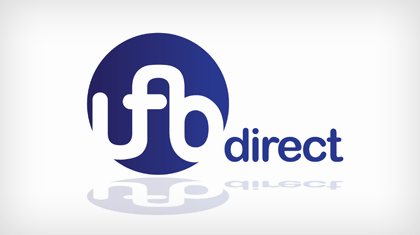|
Call Us On 0508 300 400
|
UFB
Ultra -Fast Broadband(UFB)is defined as a fibre-to-the-premises broadband service that provides downlink speeds of up to 100 Mbps(mega bits per second)and uplink speeds of up to 50 Mbps. By way of comparision,the average speed measure by web services firm Akamai in 2011 in New-Zealand was 3.5 Mbps.
The Ultra -fast Broadband initiative is a government programme to expand and develop New Zealand's broadband service. The government is contributing $1.35 billion to the initiative with significant amounts of private co-investment also being contributed by the government's Ultra-fast Broadband partners.
Schools ,hospitals and 90 percent of urban businesses will be connected by 2015.Urban homes and the remaining 10 percent of businesses will be connected by 2019.
Video conferencing
Ip TV and new advances TV services such as 3D and high definition services.
Wide area network, allowing multiple offices to easily store, access and share large amounts of information.
Cloud computing applications for game-playing, office applications, online backup, files syncing and so forth
Tele-health applications.
Education applications.
Remote working/working from home.
Excerpted largely from Crown Fibre Holdings
A: The Government's objective is to accelerate the roll-out of Ultra-Fast Broadband to 75 percent of New Zealanders by 2019, concentrating in the period to end of the 2015 on priority users (businesses, schools and health services), plus greenfields developments and certain branches of residential areas. The project is building what is known as a Fibre To The Premise network. The Government's investment is in partnership with the private sector, and is directed at open-access infrastructure (open to any service providers).
A: Government policy is to prioritise the UFB build to ensure that designated priority users including schools, health facilities and businesses are reached by the end of 2015. During this time the UFB rollout to residential areas including greenfields sites will also get underway, and it is expected this will be concluded by the end of 2019. Some towns and cities will be finished well in advance of this date.
clusters of schools, health premises and businesses in the initial period, areas of high demand areas of high density build on from existing networks transferring into the UFB scheme (Chorus in Auckland, Wellington etc.; Enable in Christchurch) due consideration to major events, working with local works underway, etc. likely costs of deployment (determined by geology & topography, local planning rules etc.)
The contracts covering Whangarei and the central North Island (Hamilton, Tauranga etc.) were signed approximately 6 months before those covering the rest of the country, so it is to be expected rollout will be a little ahead in these areas.
A: The 30/10 plan is an entry level product which provides higher bandwidth speeds (and a much better Committed Information Rate) than current ADSL2+ copper broadband products used by most New Zealanders. A 100/50 Mbps product is available to all UFB customers and will also be reasonably priced .
The first three contracts create "Local Fibre Companies", which are joint venture companies between CFH (on behalf of the Government) and the partners listed above.
As part of the Telecom contract, Telecom was required to separate into two companies, one called Chorus which owns the local UFB and copper network infrastructure, and another known as Telecom Retail which owns the mobile network XT and Telecom's relationships with residential and business customers.
In late 2011, Telecom's shareholders approved the split not the company into two entirely separate entitites: Chorus, which is partnering with CFH for the UFB project, and Telecom Retail which is competing in the mobile and retail marketsmarkets.
A: Open access is a key principle underlying the government's UFB initiative. It is critical that the networks built provide the highest levels of inter-operability with other networks and are future proofed. Local Fibre Companies (LFCs) will be required to deal with the market in a fair and equitable manner, providing for equality of access and allowing end users to switch easily between providers. These principles also require strict separation between the fibre network operators (Local Fibre Companies and Chorus) and the Retail Service Providers (RSPs) who provide services to end users such as consumers and businesses.
A: An LFC is a joint venture between Crown Fibre Holdings on behalf of the Government and a private company to deploy, own and operate a fibre-to-the-premise network in one or more parts of New Zealand under the UFB initiative. LFCs sell point to point Layer 1 Services (known as "dark fibre" as they need to be "lit" by another company in order to transfer data), and Layer 2 Services (known as "lit fibre" as the electronics needed to transfer data are already in place).

